The day of the Forn (from Italian forno) is the culmination of many days and even weeks of work. Bowls, cups, plates and a private commission of tiles are loaded into the oven. It's a nervous day for Mahmoud as there are many variables that can go wrong in the firing - glazes can fail, and pots can warp or crack due to uneven drying and variable temperatures in the kiln.
The kiln, powered by oil, is fired up around midday. It will run for 12 hours, and during these hours there will be many anxious checks, ensuring that the fire is running evenly throughout as any variation of temperature on one side or the other can spoil the glaze and produce blemishes. Once the kiln has been running for 3 hours, a fan (an old electric hair-dryer) attached to an opening at the bottom is switched on eventually increasing the heat to 1150C.
Evening comes and the forn is still running. Every so often, Mahmoud and fellow potter, Hussein, open the forn to carry out a process known as 'checking the eye' - a small piece of glazed pottery which sits at the top of the stack and indicates through its colour how the rest of the batch is progressing.
Eventually, around midnight, the kiln is switched off and opened, exposing a white-hot inside. A batch of tiles are removed for further treatment in a modification of a Japanese technique known as 'Raku'. The white-hot tiles are thrown into a large iron pot filled with grass and wood-chips which instantly ignite. The tiles are left in there overnight to cool in the open air. This exposure to oxygen and rapid cooling down produces affects the glaze and the amount of crackle creating very interesting colours. The rest of the batch are left to cool down normally in the closed furnace and unloaded the next day
In the morning, the Raku-treated tiles are removed and rubbed down with sand
The rest of the bowls and tiles, still hot to the touch, are unloaded from the forn
Despite his anxiety during the firing process, Mahmoud is happy with the results and the work is laid out on the floor of his gallery ready to be exhibited.
Contact Mahmoud Yousef
Email: potteryart.tunis@gmail.com
Mobile: (0020) 0100 875 9470




.jpg)
.jpg)
.jpg)

.jpg)
.jpg)
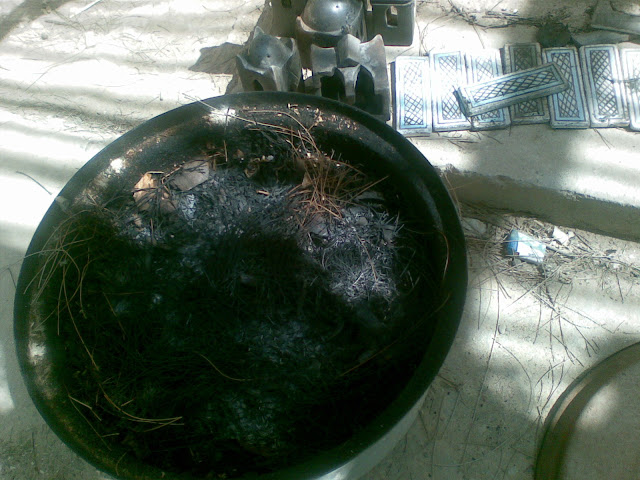

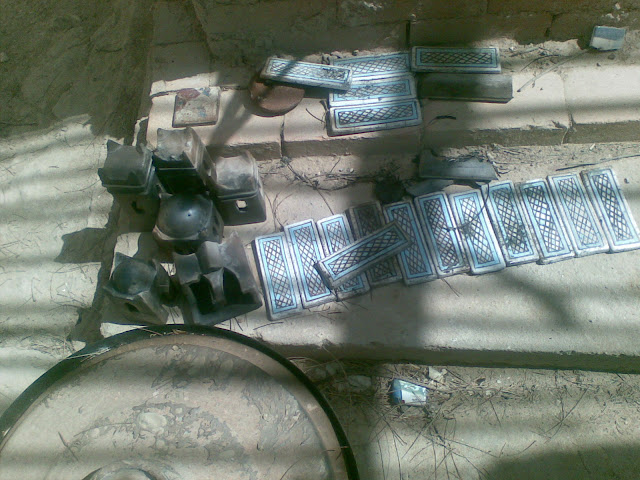
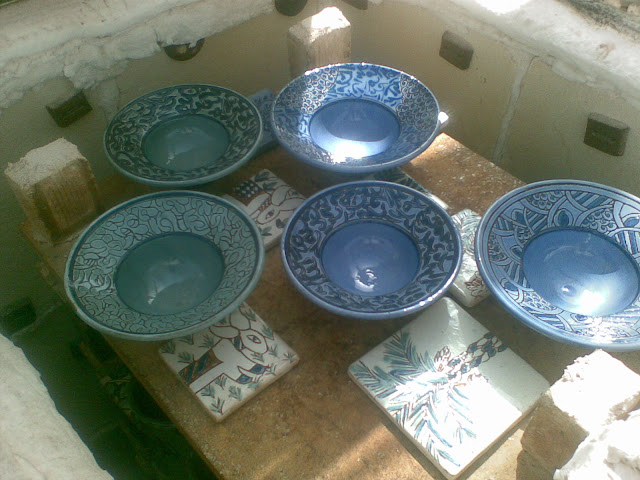
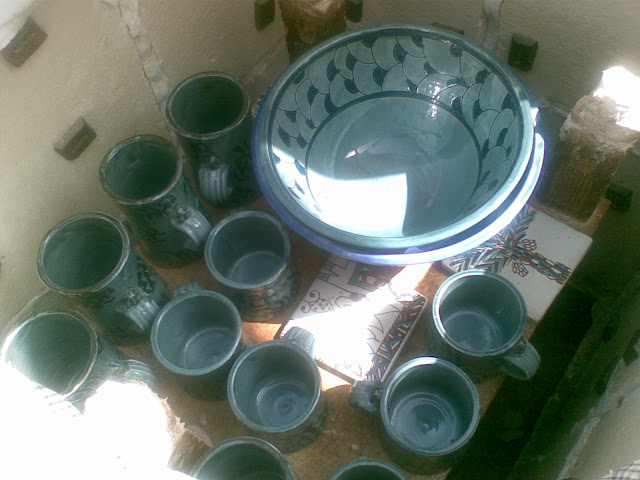
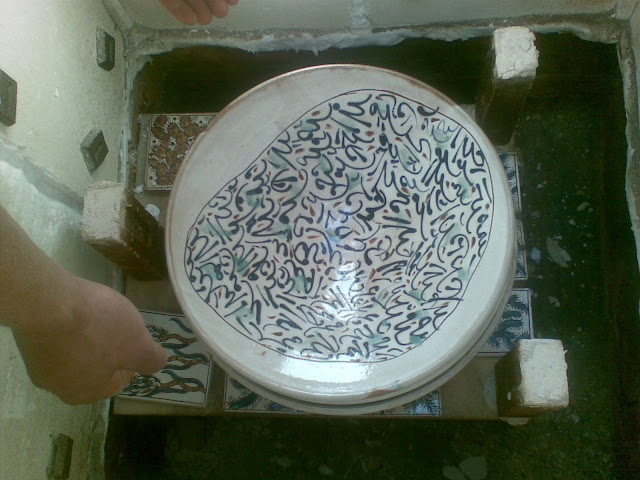
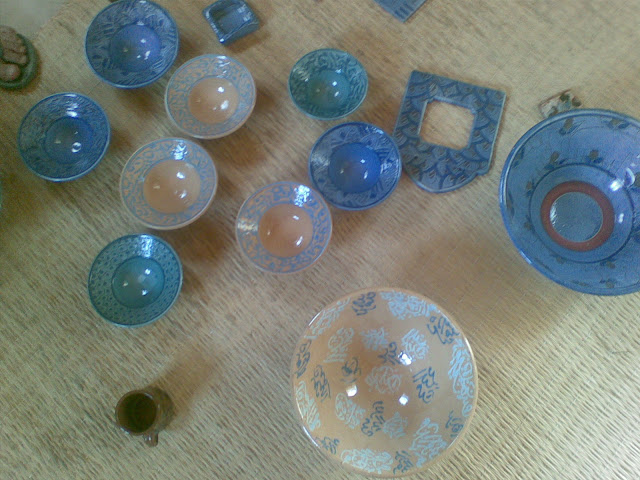





Absolutely stunning pottery! Bravo!
ReplyDelete